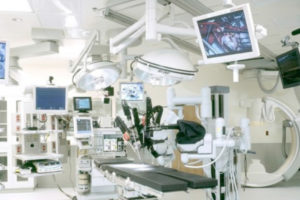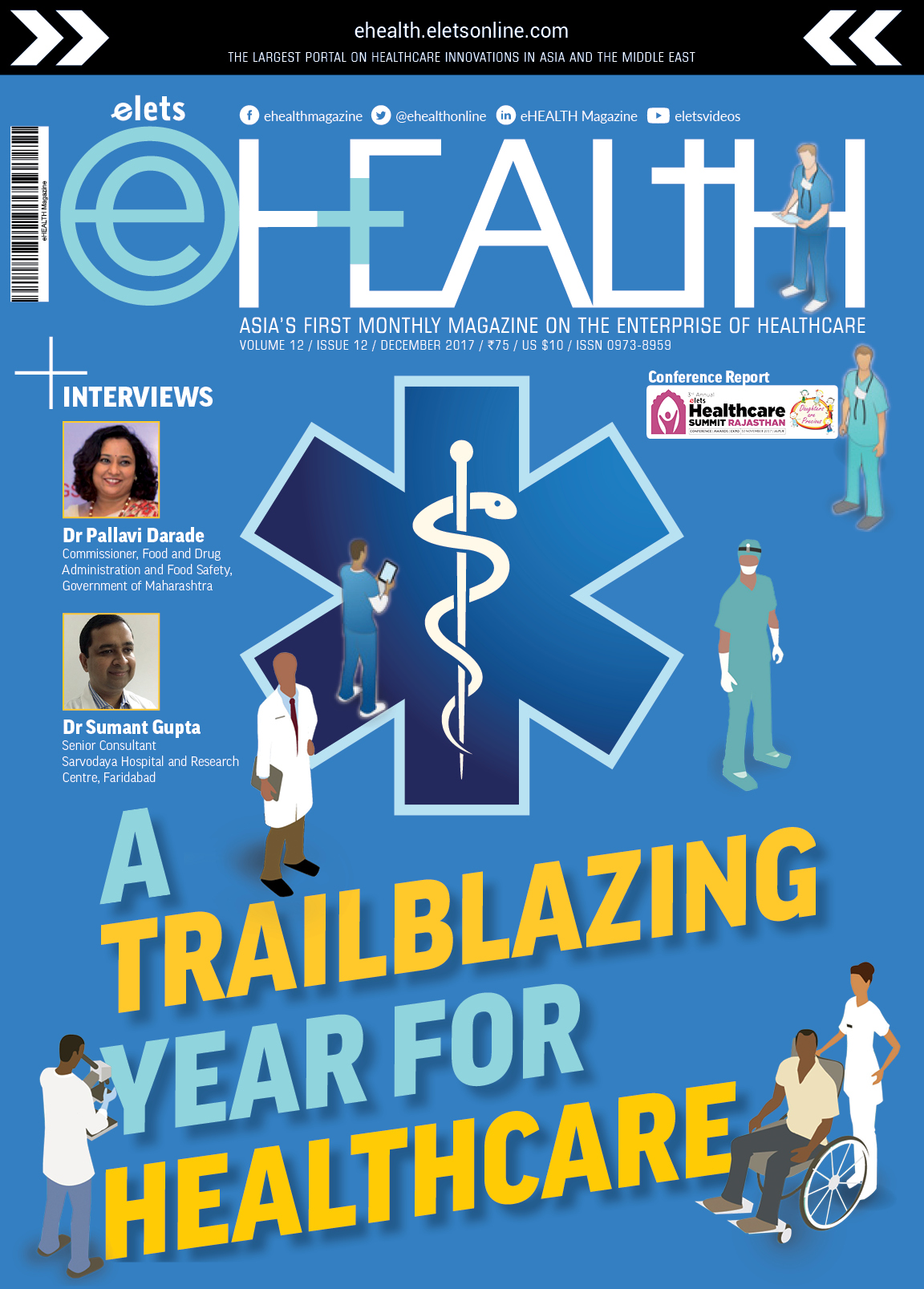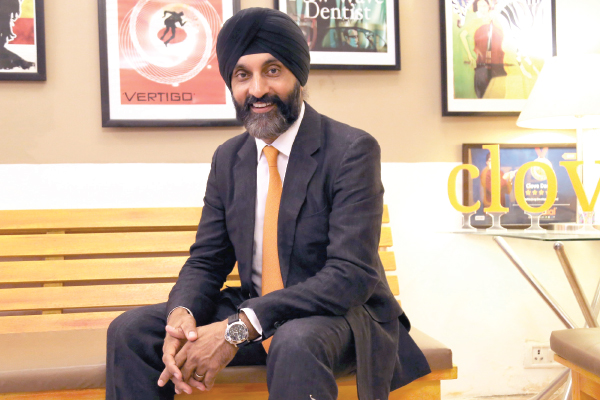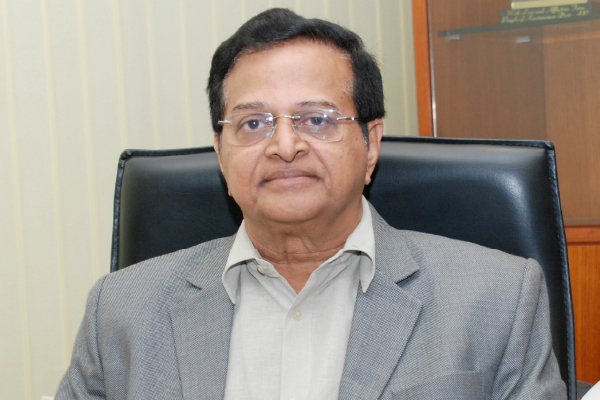
 Setting new milestones for the Indian healthcare, the year 2017 will be marked in the annals to have set the tone for growth and providing a new direction to the industry, writes Elets News Netowrk (ENN).
Setting new milestones for the Indian healthcare, the year 2017 will be marked in the annals to have set the tone for growth and providing a new direction to the industry, writes Elets News Netowrk (ENN).
It was the National Health Policy, 2017, approved by the government in March this year that sought to reach everyone in a comprehensive integrated way to move towards wellness.

Coming 15 years after the last health policy was formulated in 2002, the new policy looks at problems and solutions holistically with private sector as strategic partners. It seeks to promote quality of care, focus is on emerging diseases and investment in promotive and preventive healthcare. The policy is patient centric and quality driven. It addresses health security and make in India for drugs and devices.
The Cabinet has approved the National Health Policy 2017. It is a huge milestone in the history of health sector in the country. The Health Ministry has formulated the National Health Policy 2017, under the guidance of Prime Minister Narendra Modi. The last National Health Policy was framed in 2002. So, this policy has come after a gap of 15 years to address the current and emerging challenges necessitated by the changing socio-economic, technological and epidemiological landscape, said Jagat Prakash Nadda, Minister of Health and Family Welfare, while addressing Parliament on March 16 “ a day after the new policy was announced.
The main objective of the National Health Policy 2017 is to achieve the highest possible level of good health and well-being, through a preventive and promotive health care orientation in all developmental policies, and to achieve universal access to good quality health care services without anyone having to face financial hardship as a consequence.

In order to provide access and financial protection at secondary and tertiary care levels, the policy proposes free drugs, free diagnostics and free emergency care services in all public hospitals.
The policy envisages strategic purchase of secondary and tertiary care services as a short term measure to supplement and fill critical gaps in the health system.
The primary aim of the National Health Policy, 2017, is to inform, clarify, strengthen and prioritise the role of the Government in shaping health systems in all its dimensions “ investment in health, organisation and financing of healthcare services, prevention of diseases and promotion of good health through cross sectoral action, access to technologies, developing human resources, encouraging medical pluralism, building the knowledge base required for better health, financial protection strategies and regulation and progressive assurance for health.
2017 from Industry Perspective
The year 2017 has been an optimistic year for us at Metropolis Healthcare, with a constant focus of providing customers with quality diagnostic services. We have continued to expand our presence in global markets in which we operate, besides expanding into other markets in India. The diagnostic industry has emerged as a prominent game changer in the healthcare sector. India has also become one of the leading destinations for medical tourism and high-end diagnostic services, with tremendous capital investment for advanced diagnostic facilities, thus catering to a greater proportion of population, said Ameera Shah, Promoter and Managing Director, Metropolis Healthcare Ltd.
The main objective of the National Health Policy 2017 is to achieve the highest possible level of good health and well-being, through a preventive and promotive health care orientation in all developmental policies, and to achieve universal access to good quality health care services without anyone having to face financial hardship as a consequence.
 Speaking about Metropolis Healthcares plan in 2018, she says that the company aims at bringing international tests and technology to India and providing them to the customers at cheaper prices. We want to grow in the direction that allows us to be present at every nook and corner that brings us closer to the customers. We look forward to stringent regulations in the diagnostic market that will resist the entry of dubious players. Implementation of these standardised protocols will ensure consistent and world-class services to all the consumers, she adds.
Speaking about Metropolis Healthcares plan in 2018, she says that the company aims at bringing international tests and technology to India and providing them to the customers at cheaper prices. We want to grow in the direction that allows us to be present at every nook and corner that brings us closer to the customers. We look forward to stringent regulations in the diagnostic market that will resist the entry of dubious players. Implementation of these standardised protocols will ensure consistent and world-class services to all the consumers, she adds.
According to Shah, healthcare IT and evolving technology has benefitted the pathology industry. Health tracking mobile applications and online services such as booking appointments online for preventive healthcare check-ups, booking a path/ lab test, obtaining reports online are further shaping this segment. For any organisation aiming to become a success in this rapidly growing diagnostic laboratories market, the best move at the moment is to plan to invest in tier II and tier III cities of India. The companies should expand their network by collaborating with more health institutes and increase their collection centres in India resulting in widespread reach and more access for the masses, says Shah.
Amongst the revolutionising steps taken by the government this year was the implementation of Goods and Services Tax.
GST has ushered in a new era of tax reforms, not only for pharma industry but for all segments of the country. Looking at the short as well as long-term gains, GST would help the industry by streamlining the taxation structure as 8 different types of taxes are imposed on the Pharmaceutical Industry today. The implementation of one uniform tax will ease the way of doing business in the country, as well as minimise the cascading effects of manifold taxes that is applied to one single product, impacting the overall cost of operating. Moreover, GST would also improve the operational efficiency by rationalising the supply chain. Pharmaceutical companies need to review their strategy and distribution networks, said Rahul Darda, Chairman & Managing Director, Brinton Pharmaceuticals.
The implementation of GST would further enable a flow of seamless tax credit and improvement in the overall compliance to create an equal level playing field for the Pharmaceutical companies in the country. The biggest advantage for the companies would be the reduction in the overall transaction costs with the withdrawal of CST (Central Sales Tax). GST is also expected to lower the manufacturing cost, he added.
However, Dr Dharminder Nagar, Managing Director, Paras Healthcare, takes a divergent view in this regard. Considering the massive healthcare requirements and the need for healthcare infrastructure in India, the Narendra Modi government has rightly kept the healthcare sector outside of the otherwise overarching Goods and Services Tax (GST) regime. However, the fine print of the roll out of the GST in the country and the taxes on many of the inputs that the healthcare industry requires obviates the very reasons why healthcare has been kept out of the GST net. The GST regime has served to increase the cost of several medical equipment used in everyday treatment, said Dr Nagar highlighting the views expressed by private hospitals in the country.
The final increase in the prices of a lot of medical equipment is currently being absorbed by the healthcare providers. But in the process, the ability of the healthcare providers to expand to newer geographies and make a difference to the lives of people is being compromised. While initially healthcare providers are bearing the increased costs, there will be a time when they will find it unviable. This is when they will start looking at ways to pass on the increase to the patients, making the cost of treatment more expensive for them, added Dr Nagar.
Capping of Essential Drug Prices
National Pharmaceutical Pricing Authority (NPPA) in February this year notified the ceiling price of Coronary Stents at Rs. 7,260 for Bare Metal Stent (BMS) and Rs. 29,600 for Drug Eluting Stents (DES) including metallic DES and Bioresorbable Vascular Scaffold (BVS)/ Biodegradable Stents. Price regulation brought down the prices of stents of BMS by 74% and of DES by 85%. The move had wide impactions for the healthcare industry. The move clearly showed the government resolve to make this sector more affordable by capping prices of essential drugs.
Our contention is that affordability and competition is getting skewed – not lower ex-factory price but higher retail price wins and consumers are suffering from artificial inflation and domestic manufacturers suffer from loss of market share unless they match ever increasing MRP and trade margin, said Rajiv Nath, Founder and Forum Coordinator, Association of Indian Medical Device Industry (AiMeD).
According to Nath, the Indian medical device industry is facing the challenge of having to compete with imports with deep pocketed MNC importers and pseudo manufacturers in a very adverse eco system that is encouraging imports-based trading instead of manufacturing so that even existing Indian manufacturers are shifting to imports as that is more convenient and more profitable than to produce in India.
 From being a manufacturing-led economy, India is becoming a trading and services-led economy in the past decade. Manufacturing was brought back into focus by the honourable Prime Minister with his slogan and vision of Make in India and starting point is to make illegal pseudo manufacturers by clearly defining it as falsely and purportedly claiming to being an Indian manufacturers without actual manufacturing it in India. Manufacturing site and country of origin needs to be clearly labelled to ensure transparency and tracking and the site where there is a value addition of over 40% and theres a change of sub-heading of classification indicating transformation of an output from more than one input so at least its an assembly of components, he said.
From being a manufacturing-led economy, India is becoming a trading and services-led economy in the past decade. Manufacturing was brought back into focus by the honourable Prime Minister with his slogan and vision of Make in India and starting point is to make illegal pseudo manufacturers by clearly defining it as falsely and purportedly claiming to being an Indian manufacturers without actual manufacturing it in India. Manufacturing site and country of origin needs to be clearly labelled to ensure transparency and tracking and the site where there is a value addition of over 40% and theres a change of sub-heading of classification indicating transformation of an output from more than one input so at least its an assembly of components, he said.
[su_box title=”The New Health Policy has assigned specific quantitative targets aimed at reduction of disease prence/incidence under 3 broad components — (a) health status and programme impact, (b) health system performance and (c) health systems strengthening, aligned to the policy objectives. Some key targets that the policy seeks to achieve include:” style=”soft” box_color=”#ffffff” title_color=”#022a12″ radius=”0″]Life Expectancy and Healthy Life
Increase Life Expectancy at birth from 67.5 to 70 by 2025.
Establish regular tracking of Disability Adjusted Life Years (DALY) Index as a measure of burden of disease and its trends by major categories by 2022.
Reduction of TFR to 2.1 at national and sub-national level by 2025.
Mortality by Age and/ or cause
Reduce under five mortality to 23 by 2025 and MMR from current levels to 100 by 2020.
Reduce infant mortality rate to 28 by 2019.
Reduce neo-natal mortality to 16 and still birth rate to single digit by 2025.
Reduction of disease prence/ incidence
Achieve global target of 2020 which is also termed as target of 90:90:90, for HIV/AIDS i.e, 90% of all people living with HIV know their HIV status, 90% of all people diagnosed with HIV infection receive sustained antiretroviral therapy and 90% of all people receiving antiretroviral therapy will have viral suppression.
Achieve and maintain elimination status of Leprosy by 2018, Kala-Azar by 2017 and Lymphatic Filariasis in endemic pockets by 2017.
To achieve and maintain a cure rate of >85% in new sputum positive patients for TB and reduce incidence of new cases, to reach elimination status by 2025.
To reduce the prence of blindness to 0.25/ 1000 by 2025 and disease burden by one third from current levels.
To reduce premature mortality from cardiovascular diseases, cancer, diabetes or chronic respiratory diseases by 25% by 2025.[/su_box]
The Way Ahead
Healthcare in our country has certain issues in terms of lack of easy access, lack of consumer knowledge, high costs and too many middlemen.
All these have lead to a scenario where there is a reduction in the effectiveness of the healthcare system.
India will see an evolution in the e-health space more in terms of technology thereby providing consumers with better access to quality knowledge and healthcare solutions. Through ease of access to information and health services such as e-diagnostics and e-pharmacy, people from remote locations can also have access to quality health service without excessive costs.
Be a part of Elets Collaborative Initiatives. Join Us for Upcoming Events and explore business opportunities. Like us on Facebook , connect with us on LinkedIn and follow us on Twitter , Instagram.












